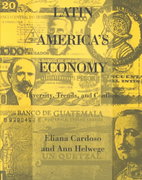Question
In this exercise we will examine Karl's choices of his two summer obsessions: live concerts at Cat's Cradle and movies on the lawn in Southern
In this exercise we will examine Karl's choices of his two summer obsessions: live concerts at Cat's Cradle and movies on the lawn in Southern Village. He has $200 per month to spend on these. Three of his indifference curves for the two events are illustrated on the attached graph. The initial prices of the two events are the concert price (PC) of $25 and the movie price of (PM) of $10. 1. Given Karl's budget and the prices of the two events, what is his preferred combination of concerts and movies given his budget each month? Illustrate it on the attached graph. How do you know that this is his preferred combination? Explain in two sentences. 2. Due to Covid, the audience for indoor concerts has declined and Cat's Cradle has lowered the concert price (PC) to $12.50. What is Karl's new preferred combination of events? Illustrate it on the attached graph. How do you know that you have the right combination? Explain in two sentences. 3. What has happened to Karl's choices of concerts and movies as we move from question 1 to question 2? Is this consistent with the law of demand? Explain in one sentence. 4. What is the substitution effect of the price change on Karl's choice? Illustrate this on the attached graph and provide a two-sentence explanation of what we learn from this effect. 5. What is the income effect of the price change on Karl's choice? Illustrate this on the attached graph and provide a two-sentence explanation of what we learn from this effect.
Step by Step Solution
There are 3 Steps involved in it
Step: 1

Get Instant Access to Expert-Tailored Solutions
See step-by-step solutions with expert insights and AI powered tools for academic success
Step: 2

Step: 3

Ace Your Homework with AI
Get the answers you need in no time with our AI-driven, step-by-step assistance
Get Started


